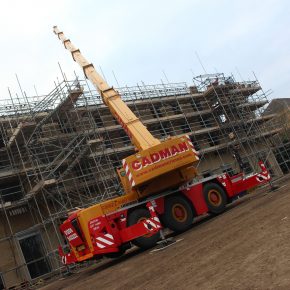
Three Things to Consider When Hiring a Crane
Whenever you have a heavy load that needs lifting, hiring a crane is an absolute must. But crane operation is a specialist business, requiring considerable technical expertise to ensure every lift is carried out safely, efficiently and in line with regulations.
Fortunately, if you choose the right mobile crane hire service, this professional expertise comes as part of the package. However, before you make a hire, there are things to be aware of to help you make the right choice.
If you’re new to crane hire, here are some key things to consider that will help you understand the process better.
How accessible is your site?
Lifts take place in all sorts of different locations. On a construction or industrial site, or when carrying out groundworks in off-grid locations, you may encounter challenging terrain. You may have to lift objects to or from hard-to-reach places with obstacles in the way.
You may face issues of how to get a mobile crane close enough to the lift location, or have to apply for permission to temporarily close public roads and footpaths.
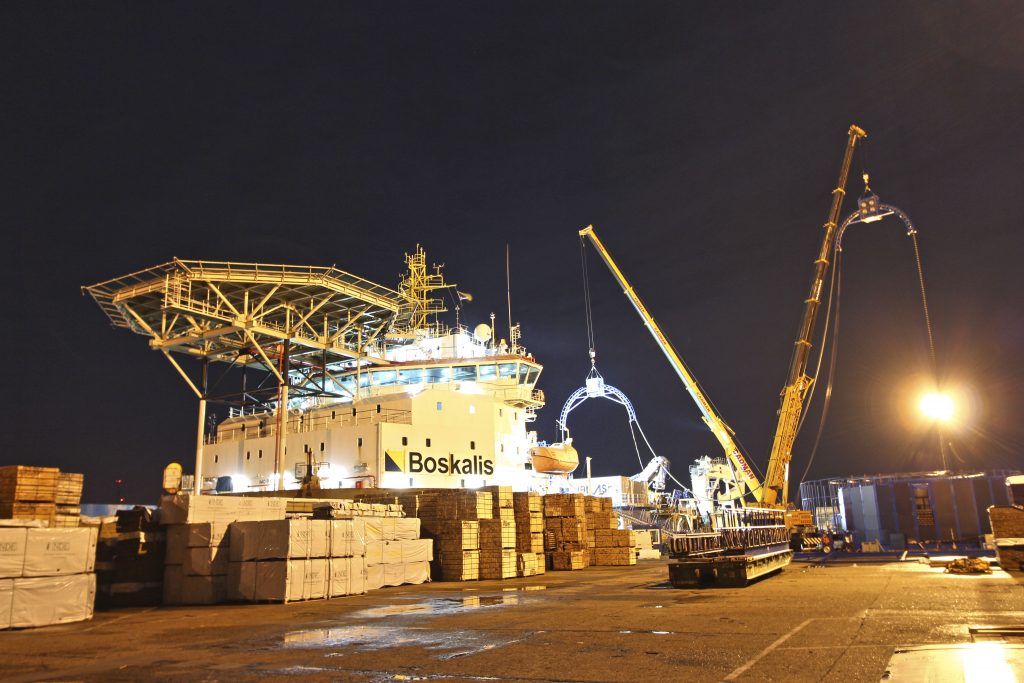
Along with the weight and size of the object(s) you need to lift, the nature of the site is the prime consideration in choosing the right mobile crane for the job. If you have any concerns over accessibility at all, you are strongly advised to seek professional advice.
A site survey before you hire a crane will help you work out issues like access, potential obstructions and ground suitability before the machinery arrives. It will also help you choose the right type of crane for the job.
Do you know the size and type of crane you need?
Most people can easily divide cranes into two basic types.
– Static cranes, which are most visible as the tower varieties which loom over large construction projects.
– Mobile cranes, which are fitted to a vehicle.
But mobile cranes come in a wide variety of shapes and sizes. Choosing the right mobile crane will depend on what you are moving and where the lift is to take place.
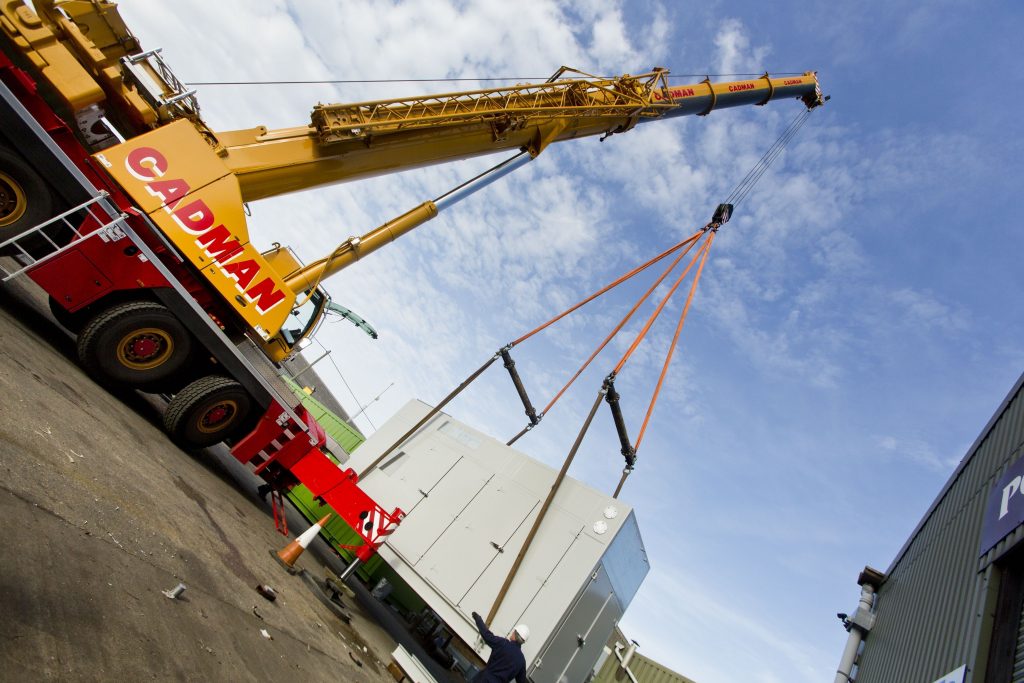
Four common types of mobile crane are as follows:
– Truck-mounted cranes. With a boom fitted to a road-going truck, these types have the advantage of being easy to transport and are especially useful for loading objects on or off for delivery or removal.
– All-terrain cranes. Designed for off-road access, these types feature large rubber tires and multi-wheel drive, with configurations of up to 10 wheels. With advanced stabilisation features, these are the first choice for heavy load lifting on rough terrain.
– Crawler cranes. Another type designed for off-road use, crawler cranes feature tracks rather than wheels. Less mobile and less suitable for heavier jobs than all-terrain cranes, they nevertheless have the advantage of being able to manoeuvre into the most difficult-to-reach places, especially the more compact varieties.
– City cranes. City cranes are a compact wheeled type designed for agility and ease of use in tight spaces. They feature just a single cab for both vehicle and crane, and shorter chassis make them easier to manoeuvre. They are ideal for multi-tasking around industrial and construction sites carrying out smaller lifting jobs.
As well as type of crane, you will also have factor in the size of crane you need. This depends on a variety of factors, including the size of the load. This handy calculator gives you guidance on the size and type of crane you need. It’s based on variables such as lift weight, lift radius, size of obstacles, angle of boom and more.
Do you have the expertise required to manage a lift?
Part of the reason crane operating is such a specialist area is because of the strict regulations surrounding health and safety.
Set out in the Lifting Operations & Lifting Equipment Regulations (LOLER) and the ‘Safe Crane Standard’ BS 7121, there is a requirement for every lift to have an Appointed Person responsible for planning, risk assessments, method statements and more, along with a lift supervisor who takes responsibility for putting the plans into practice.
If operating cranes is a day-to-day part of what your business does, you may have people within your organisation qualified to act as an Appointed Person and lift supervisor. In that case, if you need an extra crane or two for a job, you can opt for simple crane hire. This gives you the machine and a driver and leaves the management up to you.
If you don’t have the necessary expertise within your organisation, then you will need a contract lift service. This includes full project and health & safety management along with the actual plant hire.
Latest news

21st November 2024
Altro distils style and performance at English Spirit
English Spirit Distillery has used an extensive package of Altro products front and back of house, in their new visitor centre café, shop and viewing area for the working distillery.
Posted in Articles, Bathrooms, Bedrooms & Washrooms, Building Industry News, Building Products & Structures, Building Systems, Case Studies, Floors, Interior Design & Construction, Interiors, Kitchens, Restoration & Refurbishment, Retrofit & Renovation, Timber Buildings and Timber Products, Walls
21st November 2024
Abloy UK creates bespoke locking solution for Secure Information Boxes
Abloy UK has supplied The Safety Letterbox Company Ltd with a bespoke Sentry CL811 Camlock for use in its Secure Information Boxes, assisting life safety and complying with new regulations and legislation for high rise buildings.
Posted in Access Control & Door Entry Systems, Architectural Ironmongery, Articles, Building Industry News, Building Products & Structures, Building Regulations & Accreditations, Building Services, Case Studies, Facility Management & Building Services, Health & Safety, Posts, Restoration & Refurbishment, Retrofit & Renovation, Security and Fire Protection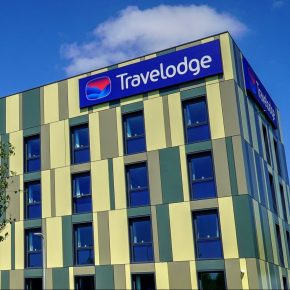
20th November 2024
CUPA: CUPACLAD enhances hotel aesthetics with a creative natural slate façade
Situated at the northern edge of a newly developed retail park near Bristol, the Abbey Wood Travelodge was conceived as part of the company’s new Budget-Luxe line of hotels – it features CUPACLAD, from CUPA PIZARRAS.
Posted in Articles, Building Industry News, Building Products & Structures, Building Systems, Case Studies, Cladding, Concrete, Cement, Admixtures, Facades, Posts, Restoration & Refurbishment, Retrofit & Renovation, Walls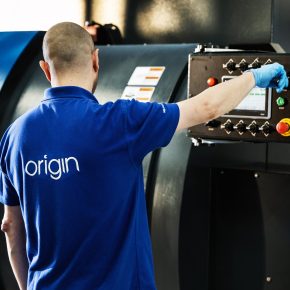
20th November 2024
Origin launches in-house powder coating facility
Origin’s latest investment is set to redefine industry standards as it launches its own in-house powder coating facility.
Posted in Aluminium Products, Articles, Building Industry News, Building Products & Structures, Building Systems, Doors, Glass, Glazing, Innovations & New Products, Paints, Coatings & Finishes, Restoration & Refurbishment, Retrofit & Renovation, Site Preparation, Windows
 Sign up:
Sign up: